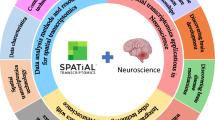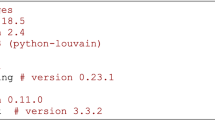Abstract
Animal experiments have shown that early developmental lesions of the entorhinal cortex lead, after a prolonged interval, to an enhanced mesolimbic dopamine release and an increased locomotor activity in rats. Hence, disturbed shape of the entorhinal cortex might indicate maturational abnormalities relevant for psychotic symptoms in schizophrenia. We used an automated surface-based MRI method to perform a region of interest analysis of entorhinal cortical surface area, folding and thickness in 59 patients with schizophrenia and 59 healthy controls. We postulated the entorhinal cortical surface area, folding index, and thickness to be significantly smaller in patients with schizophrenia. Additionally, we expected the complexity of the entorhinal cortical shape to be associated with psychotic symptoms in schizophrenia. Our ROI analysis showed a significant thinner left entorhinal cortex. In addition, our data demonstrate a positive correlation between left entorhinal cortical surface area and folding index and severity of psychotic symptoms. In conclusion, we present new evidence for the involvement of the entorhinal cortex in the pathogenesis of schizophrenia. As cortical folding is a stable neuroanatomical parameter terminated in early neonatal stages, our data give reason to assume that the vulnerability to develop psychotic symptoms might be manifest at an early level of brain maturation.


Similar content being viewed by others
References
Fyhn M et al (2004) Spatial representation in the entorhinal cortex. Science 305(5688):1258–1264
Meisenzahl EM et al (2009) Differences in hippocampal volume between major depression and schizophrenia: a comparative neuroimaging study. Eur Arch Psychiatry Clin Neurosci
Rametti G et al (2009) Hippocampal underactivation in an fMRI study of word and face memory recognition in schizophrenia. Eur Arch Psychiatry Clin Neurosci 259(4):203–211
Jakob H, Beckmann H (1986) Prenatal developmental disturbances in the limbic allocortex in schizophrenics. J Neural Transm 65(3–4):303–326
Arnold SE et al (1991) Some cytoarchitectural abnormalities of the entorhinal cortex in schizophrenia. Arch Gen Psychiatry 48(7):625–632
Joyal CC et al (2002) A volumetric MRI study of the entorhinal cortex in first episode neuroleptic-naive schizophrenia. Biol Psychiatry 51(12):1005–1007
Baiano M et al (2008) Decreased entorhinal cortex volumes in schizophrenia. Schizophr Res 102(1–3):171–180
Prasad KM et al (2004) The entorhinal cortex in first-episode psychotic disorders: a structural magnetic resonance imaging study. Am J Psychiatry 161(9):1612–1619
Kuperberg GR et al (2003) Regionally localized thinning of the cerebral cortex in schizophrenia. Arch Gen Psychiatry 60(9):878–888
Totterdell S, Meredith GE (1997) Topographical organization of projections from the entorhinal cortex to the striatum of the rat. Neuroscience 78(3):715–729
Uehara T et al (2007) Effect of prefrontal cortex inactivation on behavioral and neurochemical abnormalities in rats with excitotoxic lesions of the entorhinal cortex. Synapse 61(6):391–400
Sumiyoshi T et al (2004) Enhanced locomotor activity in rats with excitotoxic lesions of the entorhinal cortex, a neurodevelopmental animal model of schizophrenia: behavioral and in vivo microdialysis studies. Neurosci Lett 364(2):124–129
Abi-Dargham A (2004) Do we still believe in the dopamine hypothesis? New data bring new evidence. Int J Neuropsychopharmacol 7(Suppl 1):S1–S5
Annett M (1967) The binomial distribution of right, mixed and left handedness. Q J Exp Psychol 19(4):327–333
Kay SR, Fiszbein A, Opler LA (1987) The positive and negative syndrome scale (PANSS) for schizophrenia. Schizophr Bull 13(2):261–276
Fischl B, Sereno MI, Dale AM (1999) Cortical surface-based analysis. II: inflation, flattening, and a surface-based coordinate system. Neuroimage 9(2):195–207
Fischl B et al (1999) High-resolution intersubject averaging and a coordinate system for the cortical surface. Hum Brain Mapp 8(4):272–284
Dale AM, Fischl B, Sereno MI (1999) Cortical surface-based analysis. I. Segmentation and surface reconstruction. Neuroimage 9(2):179–194
Van Essen DC, Drury HA (1997) Structural and functional analyses of human cerebral cortex using a surface-based atlas. J Neurosci 17(18):7079–7102
Desikan RS et al (2006) An automated labeling system for subdividing the human cerebral cortex on MRI scans into gyral based regions of interest. Neuroimage 31(3):968–980
Woods SW (2003) Chlorpromazine equivalent doses for the newer atypical antipsychotics. J Clin Psychiatry 64(6):663–667
Voets NL et al (2008) Evidence for abnormalities of cortical development in adolescent-onset schizophrenia. Neuroimage 43(4):665–675
Goghari VM et al (2007) Sulcal thickness as a vulnerability indicator for schizophrenia. Br J Psychiatry 191:229–233
Csernansky JG et al (2008) Symmetric abnormalities in sulcal patterning in schizophrenia. Neuroimage 43(3):440–446
Sun D et al (2009) Brain surface contraction mapped in first-episode schizophrenia: a longitudinal magnetic resonance imaging study. Mol Psychiatry 14:976–986
Hilgetag CC, Barbas H (2006) Role of mechanical factors in the morphology of the primate cerebral cortex. PLoS Comput Biol 2(3):e22
Armstrong E et al (1995) The ontogeny of human gyrification. Cereb Cortex 5(1):56–63
McClure RK et al (2006) Regional change in brain morphometry in schizophrenia associated with antipsychotic treatment. Psychiatry Res 148(2–3):121–132
Nesvag R et al (2008) Regional thinning of the cerebral cortex in schizophrenia: effects of diagnosis, age and antipsychotic medication. Schizophr Res 98(1–3):16–28
Falkai P, Bogerts B, Rozumek M (1988) Limbic pathology in schizophrenia: the entorhinal region—a morphometric study. Biol Psychiatry 24(5):515–521
Falkai P, Schneider-Axmann T, Honer WG (2000) Entorhinal cortex pre-alpha cell clusters in schizophrenia: quantitative evidence of a developmental abnormality. Biol Psychiatry 47(11):937–943
Beckmann H, Heinsen H (1989) Morphometry of the entorhinal cortex. Biol Psychiatry 25(7):977–979
Kovelman JA, Scheibel AB (1984) A neurohistological correlate of schizophrenia. Biol Psychiatry 19(12):1601–1621
Kovalenko S et al (2003) Regio entorhinalis in schizophrenia: more evidence for migrational disturbances and suggestions for a new biological hypothesis. Pharmacopsychiatry 36(Suppl 3):S158–S161
Hilgetag CC, Barbas H (2005) Developmental mechanics of the primate cerebral cortex. Anat Embryol (Berl) 210(5–6):411–417
Van Essen DC (1997) A tension-based theory of morphogenesis and compact wiring in the central nervous system. Nature 385(6614):313–318
Kalus P et al (2005) New evidence for involvement of the entorhinal region in schizophrenia: a combined MRI volumetric and DTI study. Neuroimage 24(4):1122–1129
Author information
Authors and Affiliations
Corresponding author
Rights and permissions
About this article
Cite this article
Schultz, C.C., Koch, K., Wagner, G. et al. Psychopathological correlates of the entorhinal cortical shape in schizophrenia. Eur Arch Psychiatry Clin Neurosci 260, 351–358 (2010). https://doi.org/10.1007/s00406-009-0083-4
Received:
Accepted:
Published:
Issue Date:
DOI: https://doi.org/10.1007/s00406-009-0083-4




